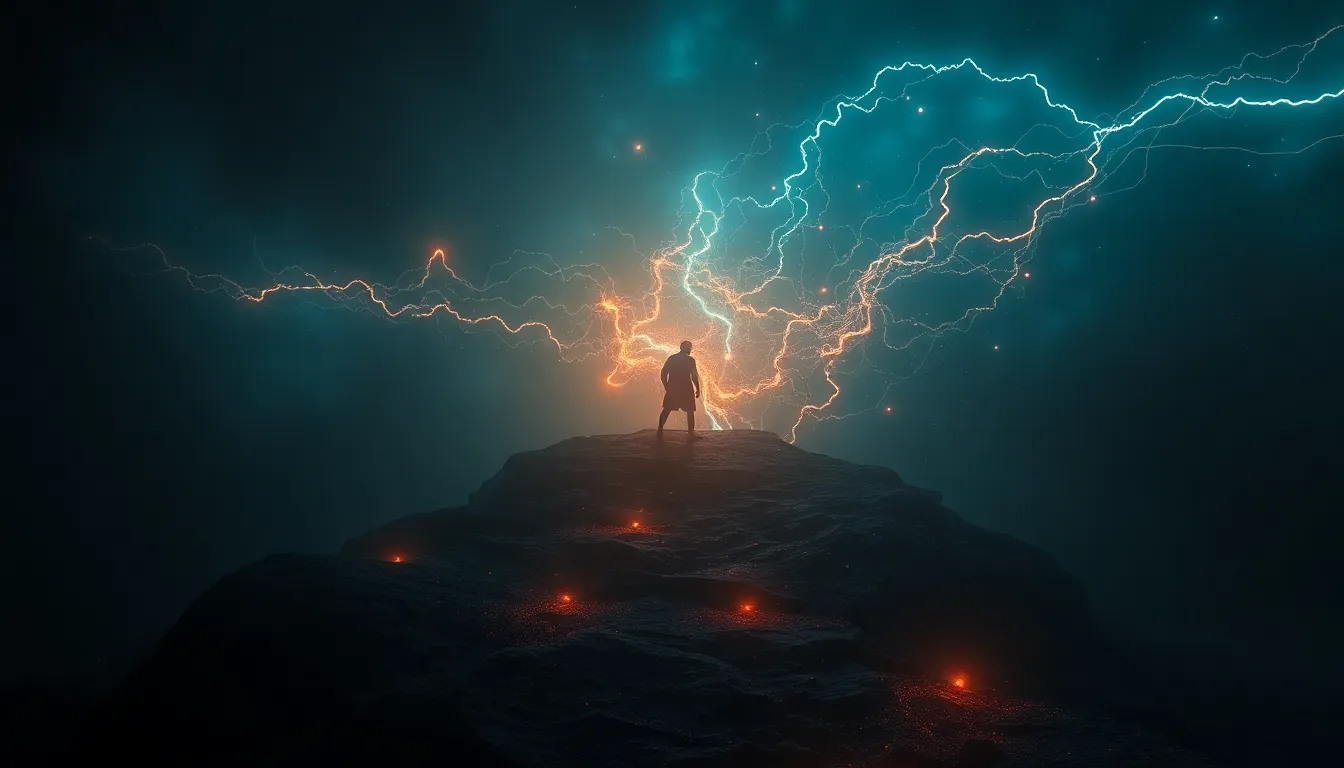The Symbolism of Colors in Chinese Mythology
Colors hold immense significance in Chinese mythology, where they embody profound meanings and reflect cultural beliefs and values. The use of specific hues conveys emotions, symbolizes supernatural powers, and represents the vast realms of the cosmos. Understanding the symbolism of colors in Chinese mythology provides a rich tapestry of insights into the ancient Chinese worldview.
Meaning of Colors in Chinese Mythology
Red: Good Fortune and Happiness
Red is a vibrant and auspicious color in Chinese mythology, symbolizing good fortune, happiness, and energy. It is associated with celebrations, weddings, and festivals, invoking joy and prosperity. Red lanterns adorn temples and homes during the Spring Festival, representing warmth and the warding off of evil spirits.
Yellow: Imperial Power and Prosperity
Yellow is the imperial color in Chinese mythology, associated with the emperor and his court. It represents power, wealth, and prosperity. The Dragon Throne, where the emperor sat, was always covered in yellow fabric, symbolizing his divine authority. Yellow robes and hats were worn by high-ranking officials, signifying their status and power.
Green: Growth, Fertility, and Health
Green is a tranquil and nurturing color in Chinese mythology, representing growth, fertility, and health. It is associated with the element wood, symbolizing nature, abundance, and vitality. Green is often used in traditional Chinese medicine to promote healing and balance. It is also the color of the Jade Emperor, the highest deity in the Taoist pantheon.
Color Combinations
In Chinese mythology, specific color combinations hold symbolic meanings:
Red and Gold: Celebration and Prosperity
Red and gold together represent celebration, festivity, and prosperity. They are commonly used in Chinese weddings and festivals, such as the Spring Festival, symbolizing joy, abundance, and good fortune.
Green and Red: Harmony and Good Fortune
Green and red symbolize harmony, balance, and good fortune. This color combination is often used in traditional Chinese architecture and textiles, representing the harmonious balance between yin and yang.
Black and White: Death and Mourning
Black and white represent death, mourning, and sorrow. They are used in funerals and during periods of mourning to express grief and respect for the deceased.
Colors in Chinese Deities
Jade Emperor: Green
The Jade Emperor, the supreme deity in Taoism, is depicted with a green face, symbolizing his connection with the element wood and his role as the creator and nurturer of all life.
Guan Di: Red
Guan Di, the god of war, is depicted with a red face, representing his bravery, loyalty, and righteous anger. His red face also symbolizes his power to ward off evil and protect people from harm.
Xi Wangmu: White
Xi Wangmu, the Queen Mother of the West, is depicted with a white face, symbolizing her purity, wisdom, and immortality. She is associated with the feminine principle and is considered the protector of women and children.
Colors in Chinese Festivals
Spring Festival: Red
The Spring Festival is celebrated with vibrant red decorations, representing joy, prosperity, and good fortune. Red lanterns, firecrackers, and couplets adorn homes and streets, symbolizing the renewal of life and the banishment of evil spirits.
Dragon Boat Festival: Green
The Dragon Boat Festival is celebrated with the consumption of rice dumplings wrapped in green leaves, representing growth, vitality, and the banishment of bad luck. The green leaves symbolize the green rice stalks that were used to protect the rice from evil spirits.
Mid-Autumn Festival: Gold
The Mid-Autumn Festival is celebrated with mooncakes and lanterns, representing the golden harvest moon and the reunion of family and friends. The gold color symbolizes prosperity, abundance, and the hope for a bright future.
Colors in Chinese Art
Tang Dynasty Paintings: Bright and Vivid Colors
Tang Dynasty paintings are characterized by their bright and vivid colors, which evoke the vibrancy and energy of the period. Artists used bold strokes and saturated hues to depict scenes of nature, court life, and religious ceremonies.
Song Dynasty Porcelain: Pastel and Elegant Colors
Song Dynasty ceramics are renowned for their pastel and elegant colors, which reflect the refined aesthetics of the period. Celadon and white glazes were popular, creating a soft and luminous effect in ceramic pieces.
Ming Dynasty Textiles: Rich and Intricate Patterns
Ming Dynasty textiles are known for their elaborate patterns and rich colors. Silk and cotton fabrics were woven with intricate designs and vibrant dyes, reflecting the cultural sophistication and artistry of the period.
Colors in Chinese Literature
The Red Cliff: Use of Red to Symbolize War
In the novel "The Red Cliff," the color red is used to symbolize the bloody battles and conflicts of the Three Kingdoms period. The novel depicts the use of red lanterns and flags in war camps, representing the sacrifice and bloodshed that accompanies warfare.
The Dream of the Red Chamber: Use of Colors to Represent Characters
In the novel "The Dream of the Red Chamber," different colors are used to represent the personalities and fates of the characters. For example, the color red is associated with passion, love, and tragedy, while the color white represents purity, innocence, and sorrow.
Journey to the West: Use of Colors to Symbolize Journey
In the novel "Journey to the West," the colors worn by the characters symbolize their journey and transformation. The Monkey King wears red, representing his fiery nature and rebellious spirit, while Tang Sanzang wears white, representing his purity and compassion.
Colors in Chinese Architecture
Temple of Heaven: Blue and Red
The Temple of Heaven is a complex of religious buildings in Beijing. The main hall, known as the Hall of Prayer for Good Harvests, has a blue roof and red walls. The blue roof represents the heavens, while the red walls represent the earth, symbolizing the connection between heaven and earth.
Forbidden City: Red and Gold
The Forbidden City, the former imperial palace in Beijing, is known for its red walls and gold roofs. The red walls represent good fortune and protection, while the gold roofs symbolize imperial authority and power.
Great Wall of China: Gray and Brown
The Great Wall of China is the largest man-made structure in the world. It is built of gray bricks and brown stone, which blend into the surrounding landscape. The gray and brown colors represent strength, durability, and the enduring nature of the Chinese civilization.
Conclusion: Significance of Colors in Chinese Culture
Colors hold immense significance in Chinese mythology, art, literature, and architecture. They embody cultural beliefs, symbolize supernatural powers, and represent the vast realms of the cosmos. Understanding the symbolism of colors in Chinese mythology provides a deep appreciation for the richness and complexity of Chinese culture.



